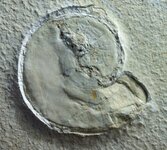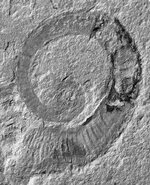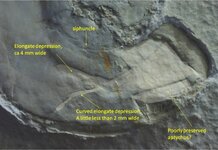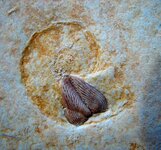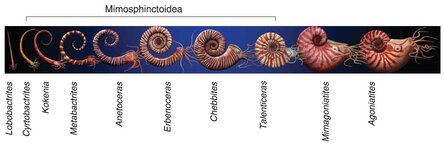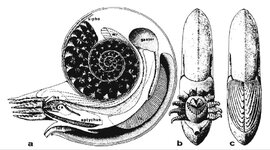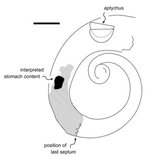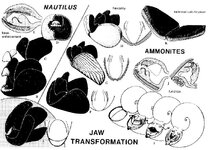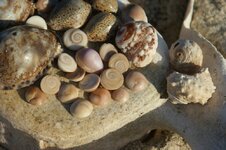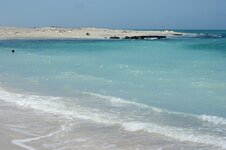- Joined
- Mar 7, 2009
- Messages
- 542
What are the best examples of soft-part preservation in ammonoids?
The attached 11 cm Late Jurassic ammonite from Solnhofen has some suggestive structures in its body chamber.
I found the attached image of a 49 mm Allocrioceras with probable stomach contents (thought to be remains of pelagic comatulid crinoids) preserved, from Wippich & Lehman (2004).
Are there examples of soft-part preservation in ammonites from La Voulte or Christian Malford? - and if not why not?
Thanks.
The attached 11 cm Late Jurassic ammonite from Solnhofen has some suggestive structures in its body chamber.
I found the attached image of a 49 mm Allocrioceras with probable stomach contents (thought to be remains of pelagic comatulid crinoids) preserved, from Wippich & Lehman (2004).
Are there examples of soft-part preservation in ammonites from La Voulte or Christian Malford? - and if not why not?
Thanks.

